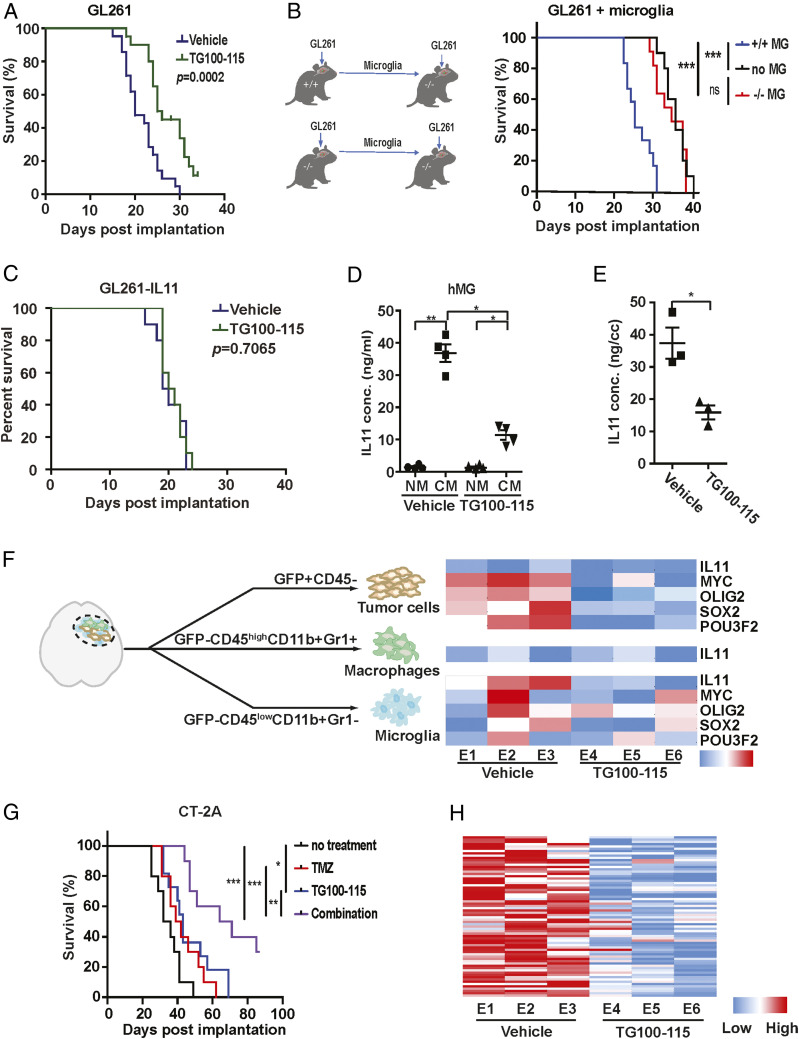Fig. 4.
PI3Kγ inhibition suppresses microglia density and glioblastoma tumorigenicity. (A) The effect of TG100-115 treatment on the survival of mice orthotopically implanted with GL261. n = 10, P = 0.0002. (B) The survival of PI3Kγ−/− mice after orthotopic coimplant of GL261 cells with the microglia isolated from PI3Kγ+/+ or PI3Kγ−/− mice. n = 10. ***P < 0.0001; ns: not significant. (C) The effect of TG100-115 treatment on the survival of mice orthotopically implanted with GL26-IL11. n = 10, P = 0.7065. (D) The enzyme-linked immunosorbent assay (ELISA) analysis of IL levels in CM of TG100-115–treated immortalized hMG. (E) The ELISA analysis of IL11 protein level in orthotopically implanted GL261 tumors with or without TG100-115 treatment. *P < 0.05. (F) qRT-PCR analysis of IL11, MYC, OLIG2, SOX2, and POU3F2 in tumor cells, TAM, and microglia isolated from GL261 tumors that underwent TG100-115 treatment (Right). Orthotopic tumors were resected after treatment and sorted as shown in Left. Three independent tumors were analyzed for the treated and untreated cohorts. (G) The survival of mice orthotopically implanted with CT-2A tumor after treatment with TG100-115, TMZ, or a combination of these two drugs (combo). n = 10. *P < 0.05; **P < 0.01; ***P < 0.0001. (H) The effect of TG100-115 treatment on the expression of the 82 survival-associated genes. RNA was extracted from orthotopic GL261 tumors with or without TG100-115 treatment and analyzed by qRT-PCR. ΔCt between gene and actin in each sample was plotted as a heatmap. Three independent tumors were analyzed for the treated and untreated cohorts.

